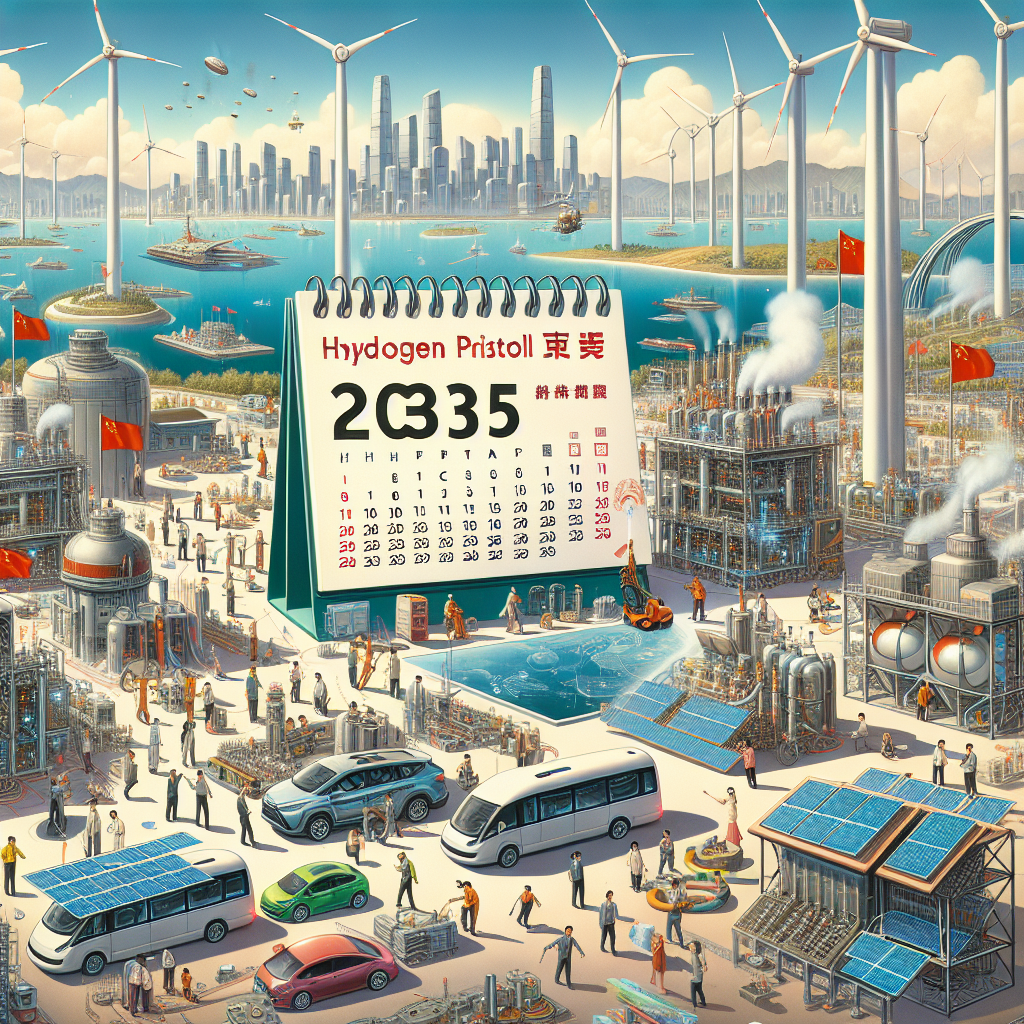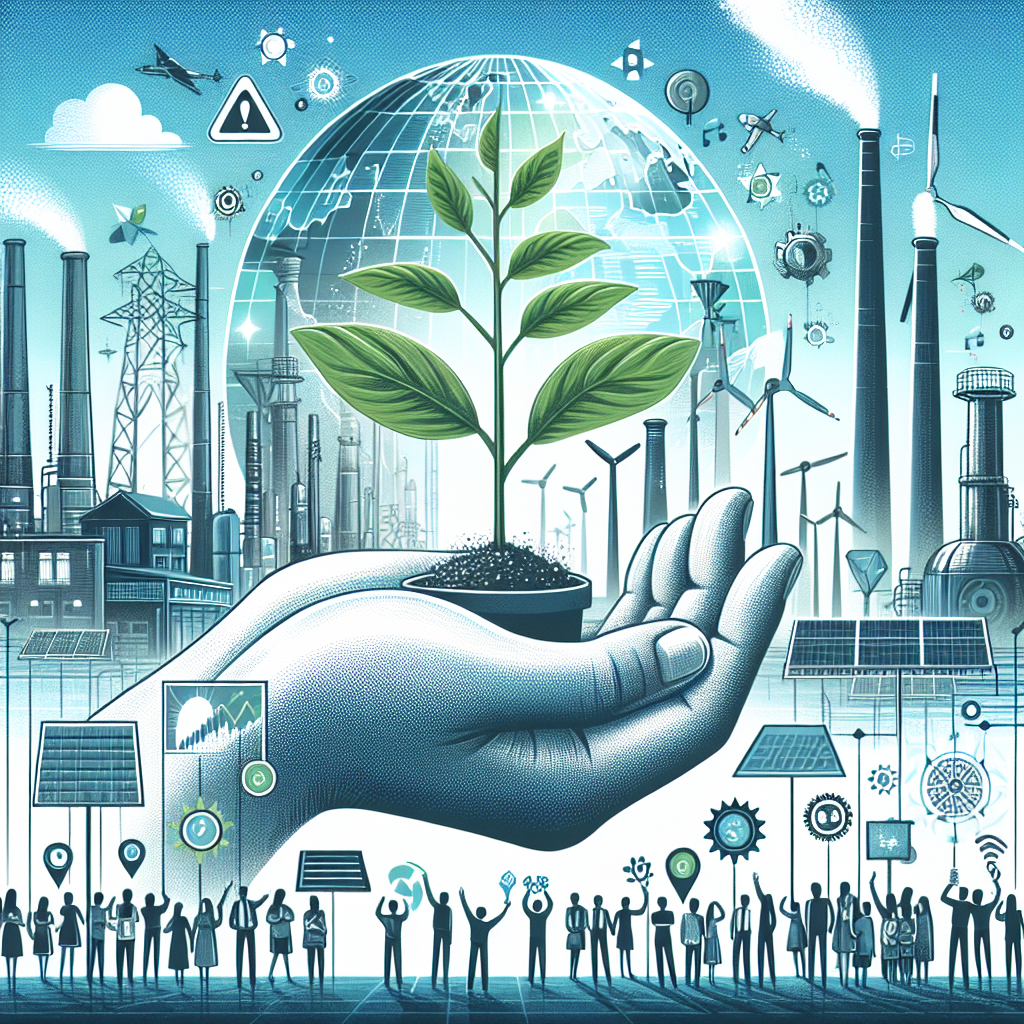“Powering progress, one sector at a time – Energy for a sustainable future.”
Introduction
Energy use by sector refers to the division of energy consumption among different industries and sectors of the economy. This includes residential, commercial, industrial, and transportation sectors. Understanding how energy is used in each sector is crucial for developing effective energy policies and promoting sustainable energy practices. In this introduction, we will explore the various sectors of energy use and their impact on the environment and economy. By examining energy use by sector, we can gain insights into the current energy landscape and identify opportunities for improvement and innovation.
The Impact of Industrial Energy Use on the Environment
Energy is a vital resource that drives the modern world. From powering our homes and businesses to fueling transportation and manufacturing, energy is essential for our daily lives. However, the way we produce and consume energy has a significant impact on the environment. In this article, we will explore the impact of industrial energy use on the environment.
The industrial sector is responsible for a significant portion of global energy consumption. According to the International Energy Agency, industry accounts for 37% of global energy use, making it the largest energy-consuming sector. This high demand for energy is driven by the production of goods and services, such as steel, cement, and chemicals.
One of the primary sources of energy for the industrial sector is fossil fuels, including coal, oil, and natural gas. These non-renewable resources are burned to generate electricity or used directly in industrial processes. The combustion of fossil fuels releases carbon dioxide and other greenhouse gases into the atmosphere, contributing to climate change. In addition, the extraction and transportation of these fuels also have negative environmental impacts, such as air and water pollution.
The industrial sector also relies heavily on electricity, which is often generated from fossil fuels. This electricity is used to power machinery and equipment, as well as provide lighting and heating in factories. The production of electricity also has environmental consequences, including air and water pollution, as well as the generation of hazardous waste.
Another significant impact of industrial energy use on the environment is the depletion of natural resources. The production of goods and services requires the use of raw materials, such as minerals, metals, and timber. These resources are often extracted from the earth at a rapid rate, leading to their depletion. This not only affects the environment but also has economic implications, as the availability of these resources decreases, their prices increase.
Moreover, the industrial sector is a major contributor to waste generation. The production of goods and services often results in the generation of waste, including hazardous and non-hazardous materials. These wastes can have harmful effects on the environment, such as polluting water sources and damaging ecosystems. In addition, the disposal of these wastes can also have negative impacts, such as the release of toxic chemicals into the environment.
The industrial sector also plays a significant role in deforestation. The production of goods, such as paper and wood products, requires the use of timber from forests. This has led to the destruction of forests at an alarming rate, resulting in the loss of biodiversity and contributing to climate change. Deforestation also has social implications, as it can displace indigenous communities and disrupt their way of life.
However, it is not all doom and gloom. The industrial sector has made significant strides in reducing its environmental impact in recent years. Many industries have implemented energy efficiency measures, such as using renewable energy sources and improving the efficiency of their processes. This not only reduces their carbon footprint but also helps to save on energy costs.
In addition, there has been a growing trend towards sustainable practices in the industrial sector. Many companies are implementing circular economy principles, which aim to reduce waste and promote the reuse and recycling of materials. This not only benefits the environment but also has economic benefits, such as cost savings and increased resource efficiency.
In conclusion, the industrial sector’s energy use has a significant impact on the environment. From the burning of fossil fuels to the depletion of natural resources and the generation of waste, the industrial sector’s activities have far-reaching consequences. However, with the implementation of sustainable practices and the use of renewable energy sources, the industrial sector can reduce its environmental impact and contribute to a more sustainable future.
Exploring the Role of Residential Energy Consumption in Climate Change

Climate change is a pressing issue that affects every aspect of our lives. From extreme weather events to rising sea levels, the impacts of climate change are becoming increasingly evident. One of the major contributors to this global crisis is the use of energy, particularly in the residential sector. In this article, we will explore the role of residential energy consumption in climate change and its potential solutions.
The residential sector is responsible for a significant portion of global energy consumption. According to the International Energy Agency, it accounts for about 29% of the total energy use worldwide. This includes energy used for heating, cooling, lighting, and appliances in homes. With the growing population and increasing demand for energy, the residential sector’s energy use is expected to rise in the coming years.
The primary source of energy for residential use is fossil fuels, such as coal, oil, and natural gas. These non-renewable resources emit greenhouse gases, such as carbon dioxide, when burned, contributing to the warming of the planet. The more energy we consume in our homes, the more greenhouse gases are released into the atmosphere, exacerbating the effects of climate change.
One of the main reasons for the high energy consumption in the residential sector is the lack of energy-efficient practices and technologies. Many homes are not properly insulated, leading to heat loss in the winter and heat gain in the summer. This results in increased energy use for heating and cooling. Additionally, outdated appliances and lighting fixtures consume more energy than their modern, energy-efficient counterparts.
Another factor contributing to residential energy consumption is our lifestyle choices. With the rise of technology and electronic devices, our energy needs have increased significantly. From charging our phones and laptops to running multiple appliances simultaneously, our energy use has become more intensive. Moreover, our reliance on air conditioning and heating systems has also increased, especially in extreme weather conditions.
So, what can we do to reduce our residential energy consumption and mitigate its impact on climate change? The answer lies in adopting energy-efficient practices and technologies. Simple changes, such as turning off lights and unplugging electronics when not in use, can make a significant difference. Investing in energy-efficient appliances, such as refrigerators and washing machines, can also help reduce energy consumption.
Moreover, improving the insulation of our homes can significantly reduce the need for heating and cooling. This can be achieved by sealing air leaks, adding insulation to walls and attics, and using energy-efficient windows. These measures not only reduce energy consumption but also save money on utility bills.
Another solution is to switch to renewable energy sources, such as solar or wind power. Many homeowners are now installing solar panels on their roofs to generate clean energy for their homes. This not only reduces their carbon footprint but also provides long-term cost savings.
In addition to individual actions, governments and policymakers also play a crucial role in reducing residential energy consumption. They can implement building codes and standards that promote energy efficiency in new constructions. They can also offer incentives and subsidies for homeowners to invest in energy-efficient technologies.
In conclusion, residential energy consumption is a significant contributor to climate change. The high demand for energy in our homes, coupled with the use of fossil fuels, has a detrimental impact on the environment. However, by adopting energy-efficient practices and technologies, we can reduce our energy consumption and mitigate its impact on climate change. It is essential for individuals, governments, and businesses to work together to address this issue and create a more sustainable future for generations to come.
The Importance of Sustainable Energy Practices in the Commercial Sector
Energy is a vital resource that powers our daily lives and fuels economic growth. However, with the increasing demand for energy, it is crucial to consider the impact of our energy consumption on the environment. The commercial sector, which includes businesses, industries, and institutions, is responsible for a significant portion of energy use. Therefore, it is essential for this sector to adopt sustainable energy practices to reduce its carbon footprint and contribute to a greener future.
The commercial sector accounts for approximately 40% of global energy consumption, making it a significant contributor to greenhouse gas emissions. This sector’s energy use is primarily for heating, cooling, lighting, and powering equipment and machinery. As businesses and industries continue to grow, so does their energy consumption, making it imperative to find ways to reduce their energy use and transition to sustainable energy sources.
One of the most effective ways for the commercial sector to reduce its energy consumption is through energy efficiency measures. This involves using energy-efficient equipment and technologies, such as LED lighting, energy-efficient HVAC systems, and energy management systems. These measures not only reduce energy consumption but also result in cost savings for businesses. According to the International Energy Agency, implementing energy efficiency measures in the commercial sector could reduce global energy demand by 12% by 2040.
Another crucial aspect of sustainable energy practices in the commercial sector is the use of renewable energy sources. Renewable energy, such as solar, wind, and hydropower, is clean, abundant, and inexhaustible. By utilizing renewable energy sources, businesses can reduce their reliance on fossil fuels and significantly decrease their carbon footprint. Moreover, with advancements in technology, the cost of renewable energy has become more affordable, making it a viable option for businesses to adopt.
In addition to reducing energy consumption and transitioning to renewable energy sources, the commercial sector can also play a role in promoting sustainable energy practices through energy management and education. Energy management involves monitoring and analyzing energy use to identify areas for improvement and implementing strategies to reduce energy consumption. This can include setting energy-saving targets, conducting energy audits, and training employees on energy-efficient practices. By actively managing their energy use, businesses can not only reduce their environmental impact but also save on energy costs.
Education is also crucial in promoting sustainable energy practices in the commercial sector. By educating employees and stakeholders on the importance of energy conservation and the benefits of renewable energy, businesses can create a culture of sustainability within their organization. This can include providing training on energy-efficient practices, promoting eco-friendly behaviors, and encouraging employees to suggest ideas for reducing energy consumption.
Moreover, businesses can also collaborate with other organizations and participate in initiatives that promote sustainable energy practices. This can include joining energy efficiency programs, investing in renewable energy projects, and partnering with other businesses to share best practices. By working together, the commercial sector can have a more significant impact on reducing energy consumption and promoting sustainable energy practices.
In conclusion, the commercial sector plays a crucial role in global energy consumption and has a responsibility to adopt sustainable energy practices. By implementing energy efficiency measures, transitioning to renewable energy sources, actively managing energy use, educating employees, and collaborating with others, businesses can significantly reduce their environmental impact and contribute to a greener future. It is essential for the commercial sector to recognize the importance of sustainable energy practices and take action towards a more sustainable future.
Q&A
1) What are the different sectors that use energy?
The different sectors that use energy include residential, commercial, industrial, and transportation.
2) Which sector uses the most energy?
The industrial sector uses the most energy, accounting for approximately 32% of total energy consumption globally.
3) How does energy use differ between sectors?
Energy use differs between sectors based on their specific needs and activities. For example, the residential sector primarily uses energy for heating, cooling, and lighting homes, while the transportation sector relies heavily on energy for fueling vehicles. The industrial sector uses energy for manufacturing processes and powering machinery. Commercial buildings also use energy for lighting, heating, and cooling, but may also have additional energy needs for equipment and technology.
Conclusion
In conclusion, energy use by sector is a crucial aspect of our daily lives and has a significant impact on the environment. The industrial sector is the largest consumer of energy, followed by the transportation and residential sectors. However, with the increasing awareness of climate change and the need for sustainable practices, there has been a shift towards renewable energy sources in all sectors. It is important for governments, businesses, and individuals to work together to reduce energy consumption and promote the use of clean energy in order to mitigate the negative effects of energy use on the environment. By making conscious efforts to reduce our energy consumption and transition to renewable sources, we can create a more sustainable future for generations to come.

























